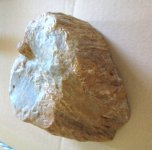Hi!
I'm new here. I'm an artist, so I am very interested in all the creativity I see in the posts on this board!
As a sculptor, I have used some metallurgic techniques myself, so I'm interested to learn what specific techniques Swift was thought to employ.
Can anyone tell me other than smelting silver, what he was known to do with it? For example, was he using advanced techniques like casting to counterfeit French crowns? Do we have any photographs of his work (counterfeited coins)? Does anyone have resources that describe his background in metalwork, and where he learned his skills?
Certain techniques like lost wax casting were heavily guarded in the few European families who have had access to them since the Renaissance.
If he was using very advanced metalluric processes like these, he may have smuggled more than the basic materials needed. Just walking away with the knowledge alone with the intent to put it to use was an act of industrial espionage of the highest order.
I've only begun to look into these questions, so I would be interested to hear from anyone who can point me to some resources!
Best,
Pam
I'm new here. I'm an artist, so I am very interested in all the creativity I see in the posts on this board!
As a sculptor, I have used some metallurgic techniques myself, so I'm interested to learn what specific techniques Swift was thought to employ.
Can anyone tell me other than smelting silver, what he was known to do with it? For example, was he using advanced techniques like casting to counterfeit French crowns? Do we have any photographs of his work (counterfeited coins)? Does anyone have resources that describe his background in metalwork, and where he learned his skills?
Certain techniques like lost wax casting were heavily guarded in the few European families who have had access to them since the Renaissance.
If he was using very advanced metalluric processes like these, he may have smuggled more than the basic materials needed. Just walking away with the knowledge alone with the intent to put it to use was an act of industrial espionage of the highest order.
I've only begun to look into these questions, so I would be interested to hear from anyone who can point me to some resources!
Best,
Pam








